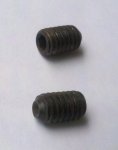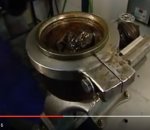Bob - If you are getting metal to metal contact then there is something very wrong with the construction of the diaphragms you are using......
.........The upper right photo shows a standard Desmopan diaphragm.
Steve
I'd suggest there's something wrong with the diaphragms YOU are using.
All my original red/green/white marked original diaphragms always behave perfectly as I described.
If these new fangled after market ones don't, I'd suggest they were not designed properly, or the manufacturer did not set the dies up properly in the injection molding machine and the diaphragm has come out too thick.
The original design of the 2 part spheres was well thought out for accurately repeatable manufacture. The elasticity of the diaphragm, and required compression was all planned. There was no need for operator guesswork... how tight is tight enough?


